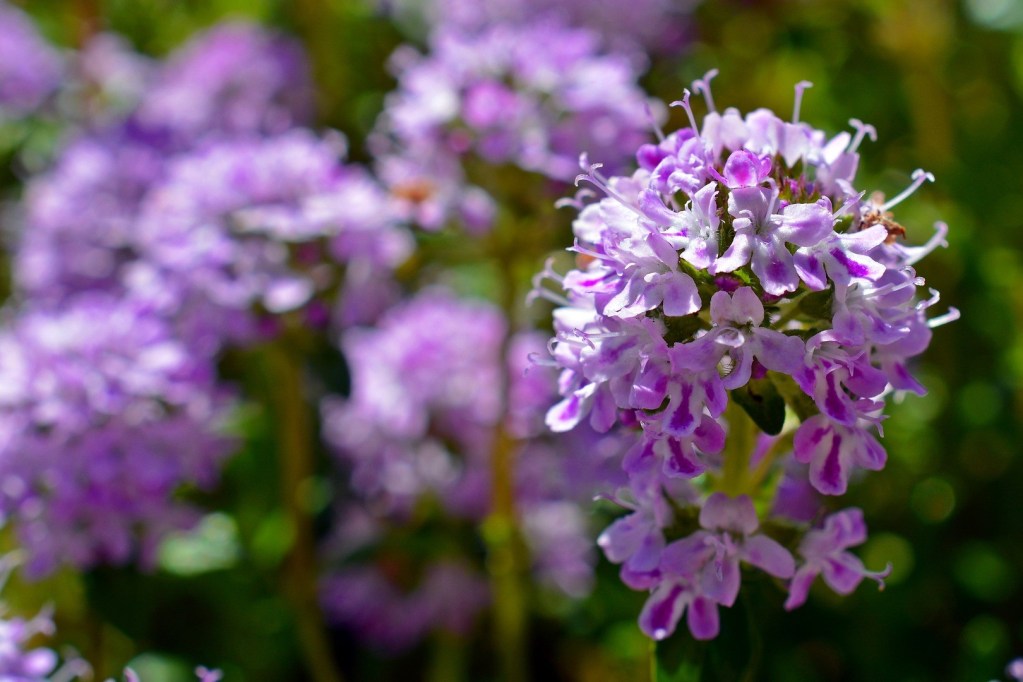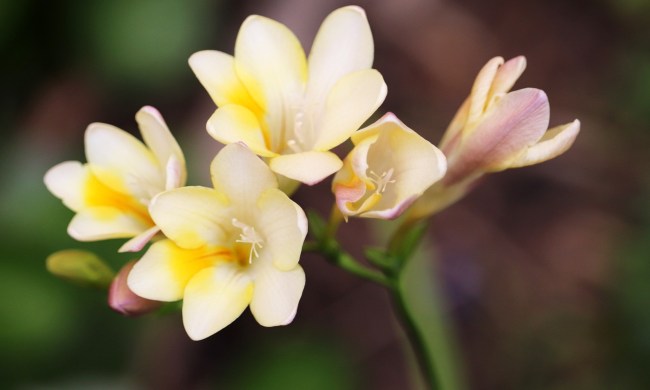Grass lawns may be common and popular, but they aren’t always a great fit. Whether you’re having trouble keeping a grass lawn healthy or are just looking for a more interesting alternative, there are plenty of options you can choose from. One is planting a creeping thyme ground cover! Creeping thyme is a beautiful plant that can grow in gardens and containers, but you can also let it spread out to cover your lawn. Wondering if a creeping thyme ground cover is right for you? Here’s what you need to know.
Is a creeping thyme ground cover right for you?

Creeping thyme is easy to plant and requires little care, making it a good option for homeowners who are busy or travel often. Additionally, creeping thyme is a flowering plant. During summer and early fall, a creeping thyme ground cover will be full of pink or purple flowers, which are pretty to look at and attract pollinators. Creeping thyme loves full sun and hot weather, and it’s moderately drought tolerant, so it’s perfect for areas that are too sunny or hot for some other grass alternatives like moss.
However, creeping thyme isn’t perfect. It is a member of the mint family, and like all mint plants, it spreads aggressively and isn’t native. There is always a chance that your creeping thyme ground cover will escape into your neighbor’s yard or other nearby green spaces. Additionally, creeping thyme struggles in full shade, so shadier yards might need a mixed lawn or a different ground cover altogether.
Planting creeping thyme

You can find creeping thyme in seeds and plugs, and you can use both to grow your ground cover. Before you start, remove all or most of the grass in the areas you want the creeping thyme ground cover to grow. If you’re growing creeping thyme from seeds, wet the soil first, then scatter the seeds like you would wildflower seeds or grass seeds. Don’t cover the seeds, as they need light to grow. The plugs will need to be planted individually. Space them roughly 6 inches to 1 foot apart, so they won’t crowd each other while establishing their root systems.
For the best results, plant creeping thyme in full sun and well-draining soil. While it can tolerate some shade and an occasional heavy rainstorm, you’ll start to notice fewer flowers and more sparse growth in areas that are shady and that have poor drainage.
Creeping thyme ground cover care

Creeping thyme is a hardy plant that only needs occasional care. While your seeds or plugs are growing, keep the ground moist but not soggy. Afterward, you only need to water creeping thyme every other week or weekly during hot, dry weather.
Creeping thyme stays relatively short, so it doesn’t need regular mowing. Many homeowners find they only need to mow creeping thyme ground covers a couple times per year or even less! However, you may want to weed eat or prune the edges of your lawn to keep the creeping thyme from spreading outside of your yard. This may also be necessary around the edges of your garden bed to keep the creeping thyme from crowding your fruits, vegetables, or flowers.
Potential concerns or downsides

As a non-native plant that spreads, there is the risk of creeping thyme becoming invasive or escaping your yard. While maintaining the edges of your property can help decrease that risk, it can’t prevent it entirely. Additionally, while the pollinators its flowers attract are beneficial for the environment, the bees can pose a risk if you have an active outdoor lifestyle or have young children who like to play outside.
If your yard is heavily shaded or has sections where water tends to build up, then creeping thyme might struggle to thrive in your yard. While installing a French drain can help water buildup, shady yards may simply need a different ground cover.
Alternatives to creeping thyme

Grass and creeping thyme aren’t the only ground covers available. So if you need a different ground cover, or you want to mix your creeping thyme ground cover with another plant, here are a few choices for you. For shady, cool, or wet yards, you might find more success with a moss lawn. Vinca minor is another common ground cover choice, as it is beautiful, hardy, and adaptable. However, it’s also not native and can become invasive if not carefully managed.
Clover is another common ground cover, with many of the same benefits as Vinca minor and creeping thyme. While the most common white and red clovers are not native to the U.S., there are some native clover species. Finding seeds for these native clovers can be tricky, but they make excellent ground covers. For gardeners in the Southwestern U.S., turkey tangle frog fruit is a great native ground cover.
Creeping thyme ground cover may not be right for everyone, but it offers plenty of appealing qualities. If a plain green grass lawn isn’t to your liking, then switching to a more colorful, flowering ground cover might be a great solution. Alternative ground covers often require less mowing, and they are usually much more visually appealing. Whether you choose creeping thyme or another floral ground cover, both you and your local pollinators are sure to enjoy it.




